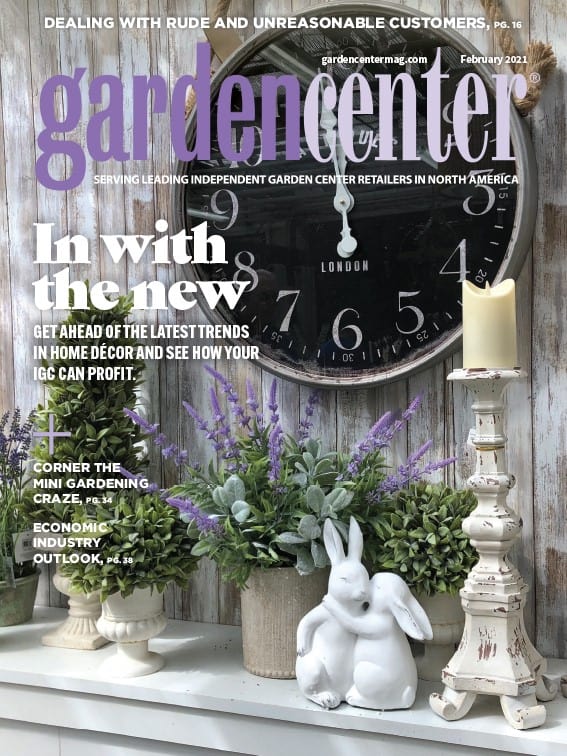
At Tangletown Gardens, the Minnesota-based IGC is big on the benefits of biophilic design. For the unaware, the goal of biophilic design is to connect people to the environment and incorporate natural elements into building spaces and customers are responding with enthusiasm.
“We like to push the boundaries of design and encourage people to step out of their comfort zone,” says Carolyn Weigel, marketing coordinator.
Take a look at some of their evergreen offerings and use these tips to remind customers about the power of nature this spring.

PHOTO COURTESY OF DEAN ENGELMANN

PHOTO COURTESY OF CAROLYN WEIGEL

PHOTO COURTESY OF CAROLYN WEIGEL

PHOTO COURTESY OF CAROLYN WEIGEL

PHOTO COURTESY OF CAROLYN WEIGEL

PHOTO COURTESY OF CAROLYN WEIGEL

PHOTO COURTESY OF CAROLYN WEIGEL

Explore the February 2021 Issue
Check out more from this issue and find your next story to read.
Latest from Garden Center
- GS1 US Celebrates 50-Year Barcode 'Scanniversary' and Heralds Next-Generation Barcode to Support Modern Commerce
- Weekend Reading 7/26/24
- Retail Revival: Making gardening contagious
- ‘Part of our story’
- Registration now open for Garden Center Fertile Ground Webinar Series
- Dramm introduces new hose, sprinkler attachments for home gardeners, nurseries
- Meet the 15 Retailers' Choice Awards winners from Cultivate'24
- 2024 Top 100 Independent Garden Centers List





